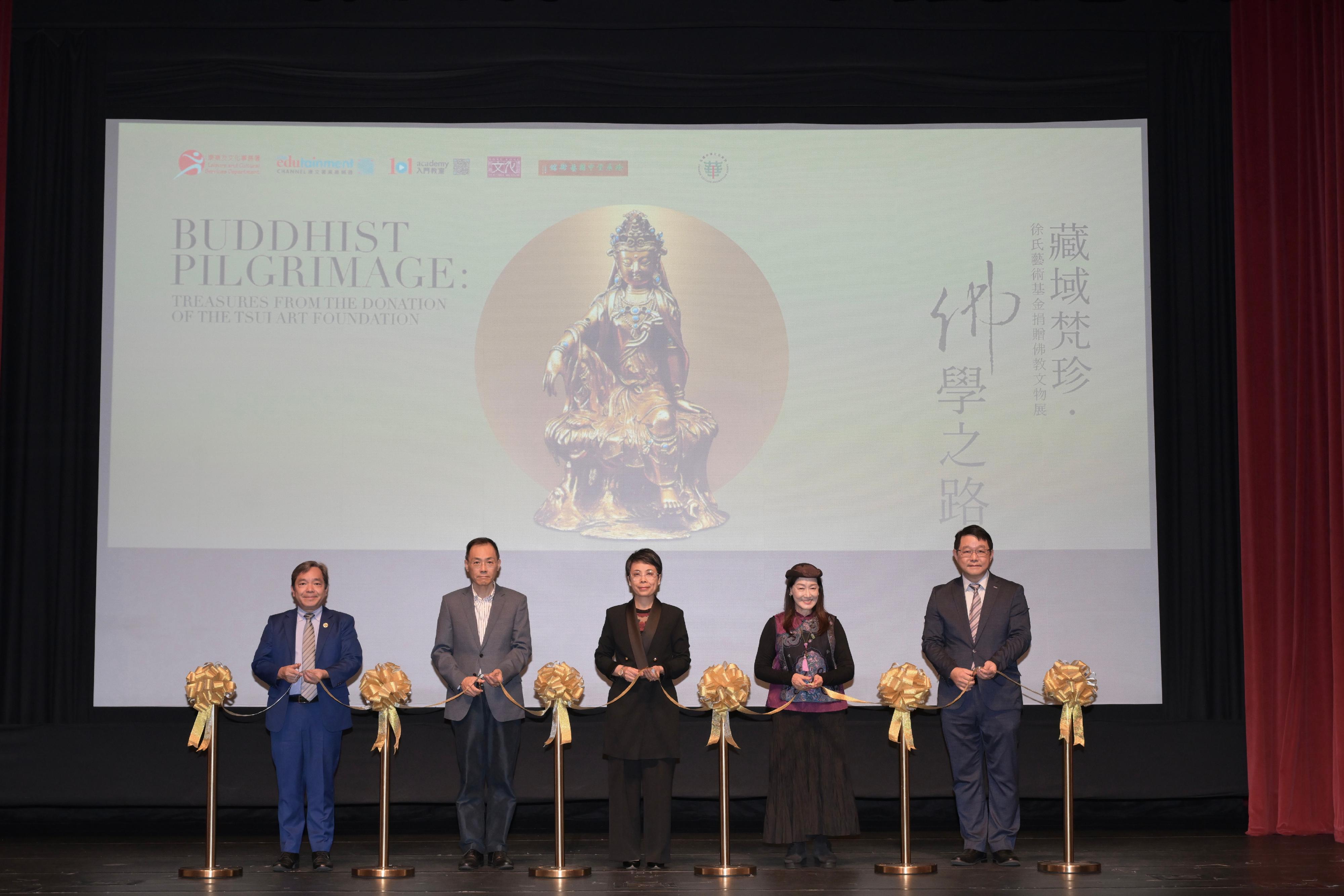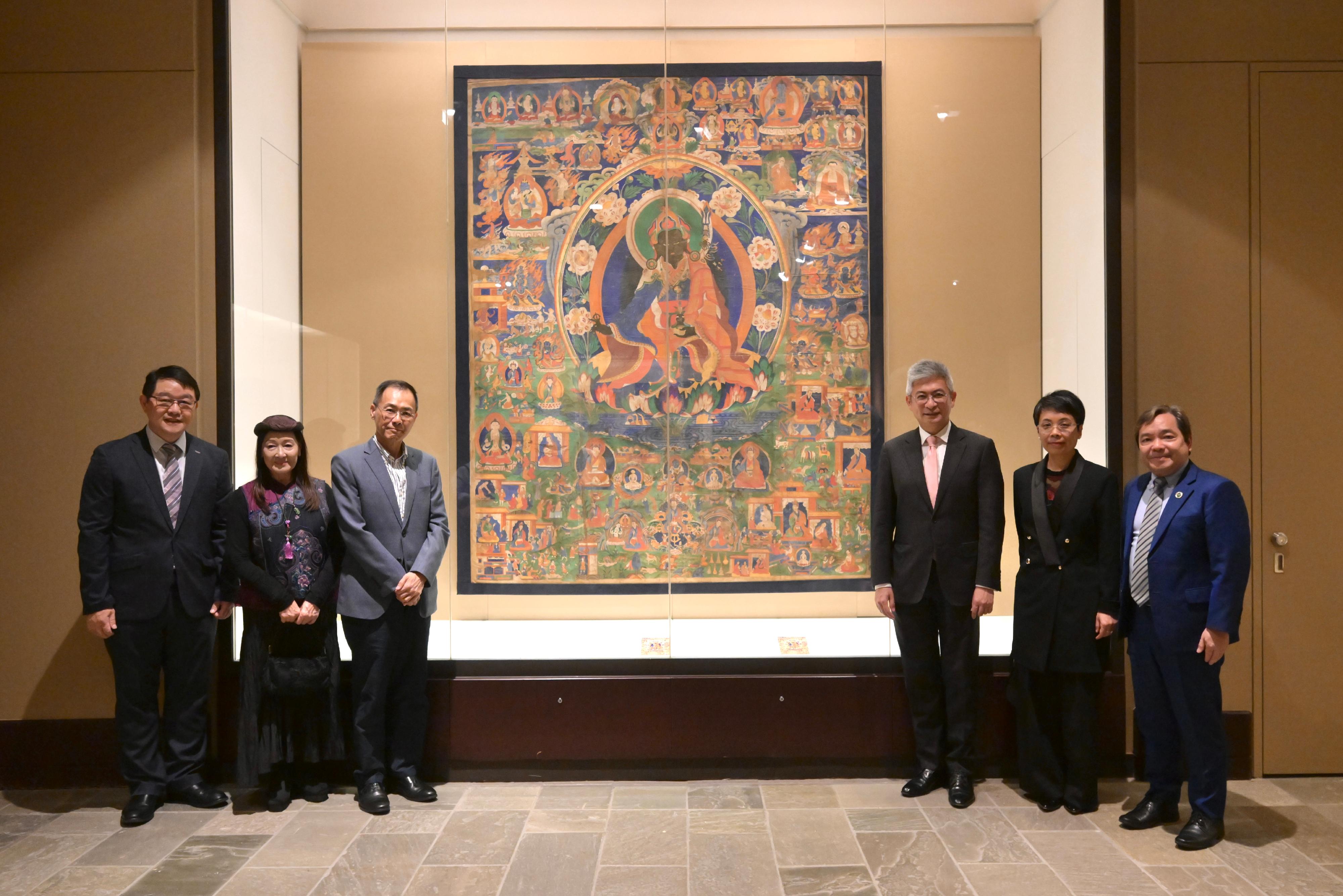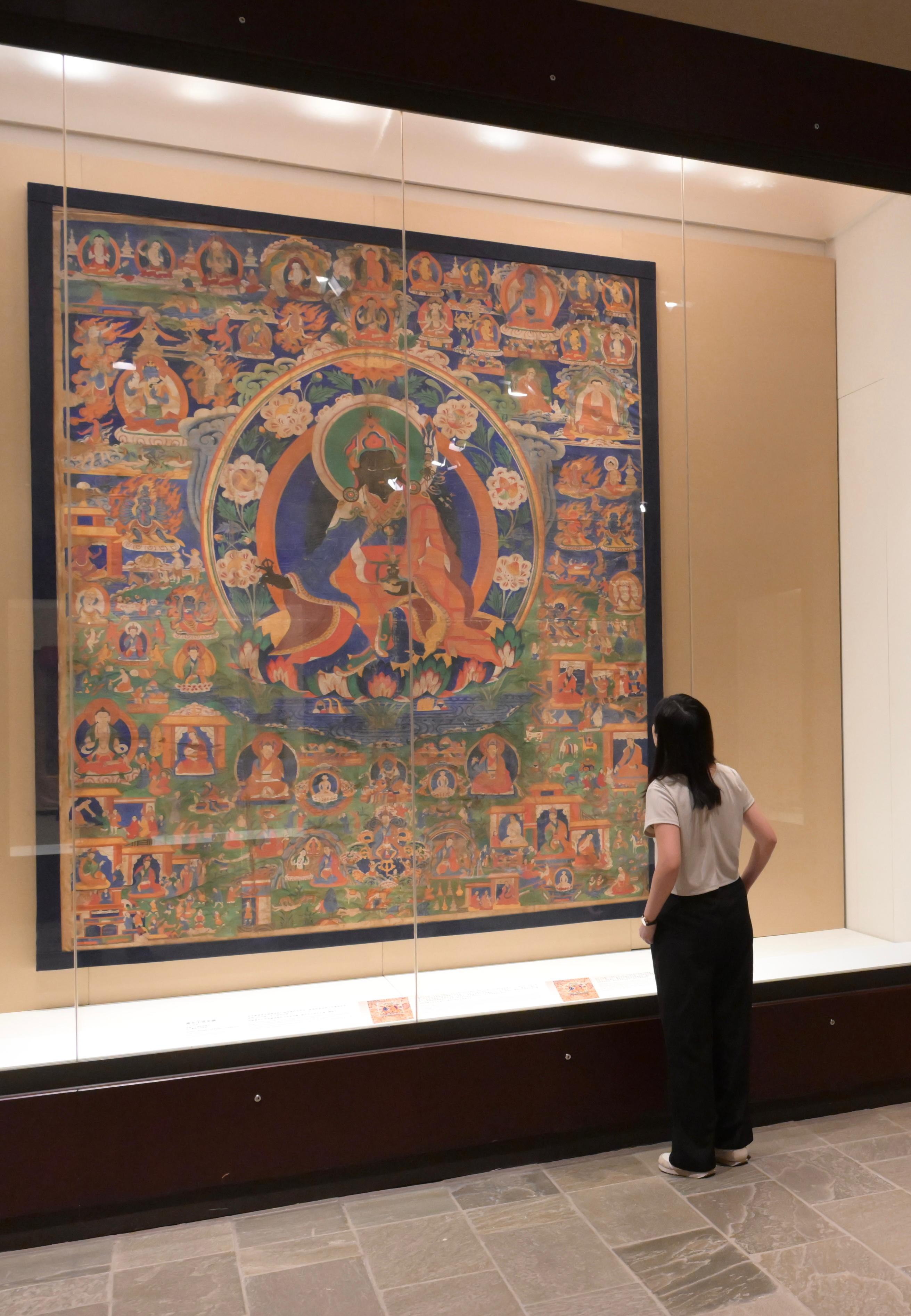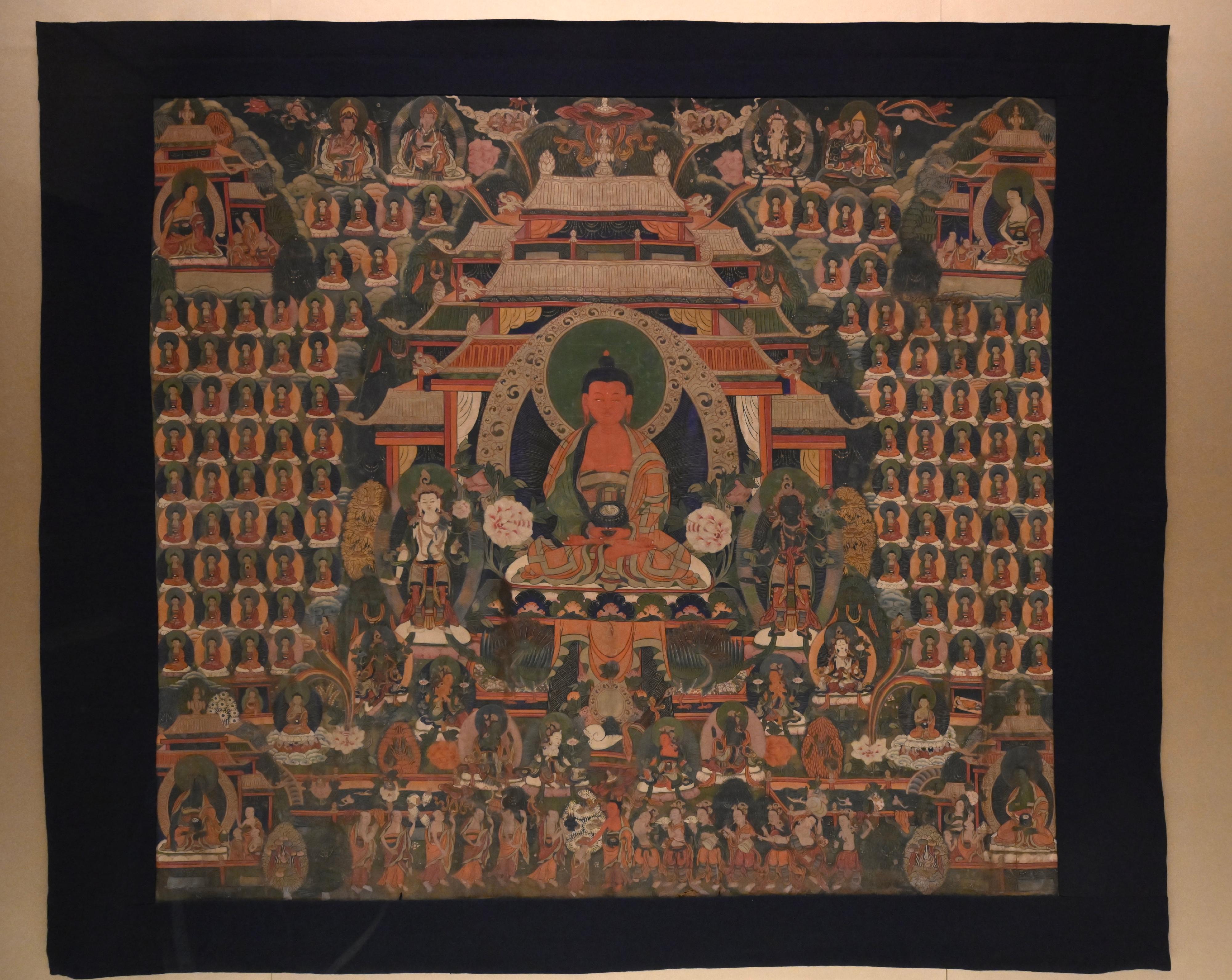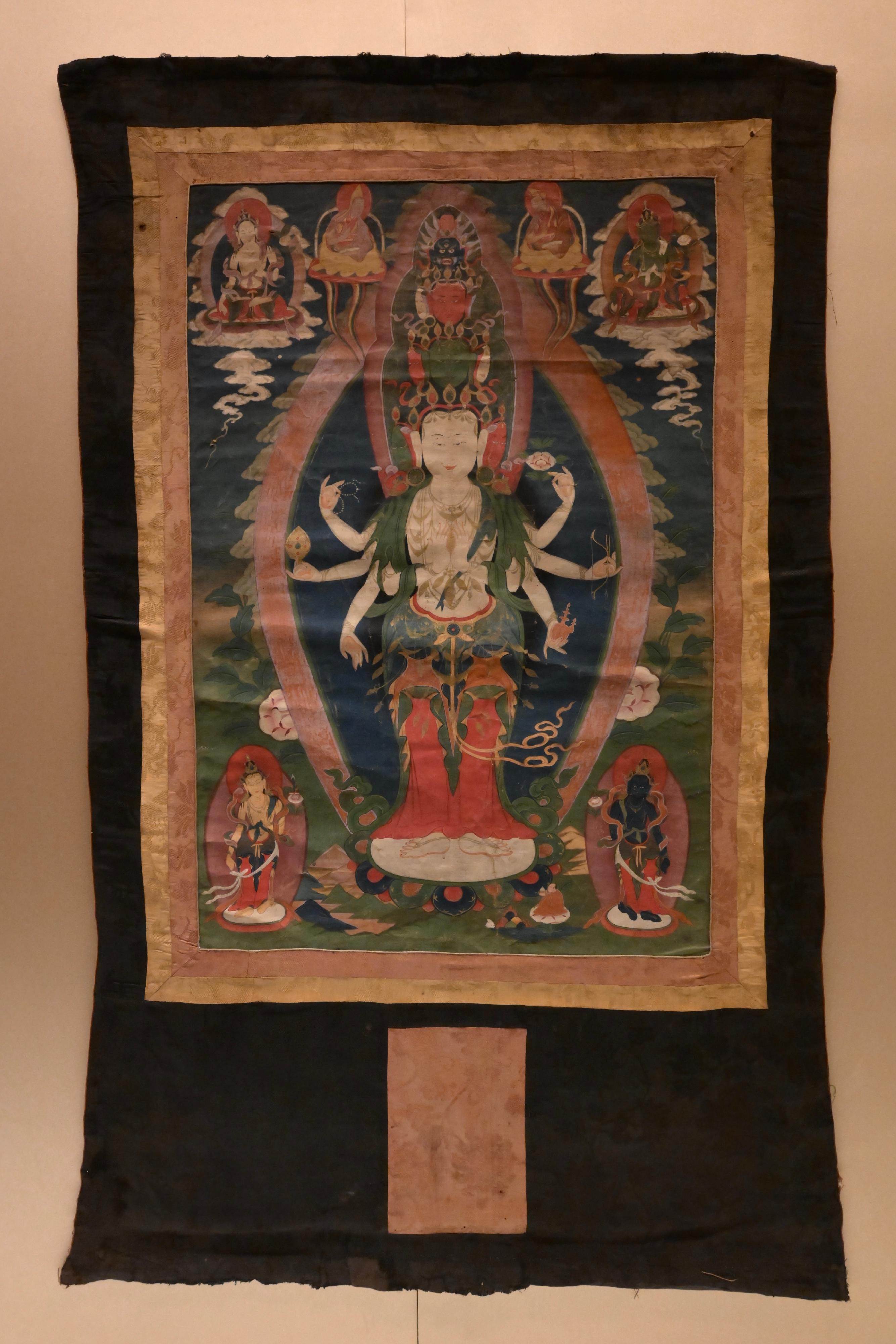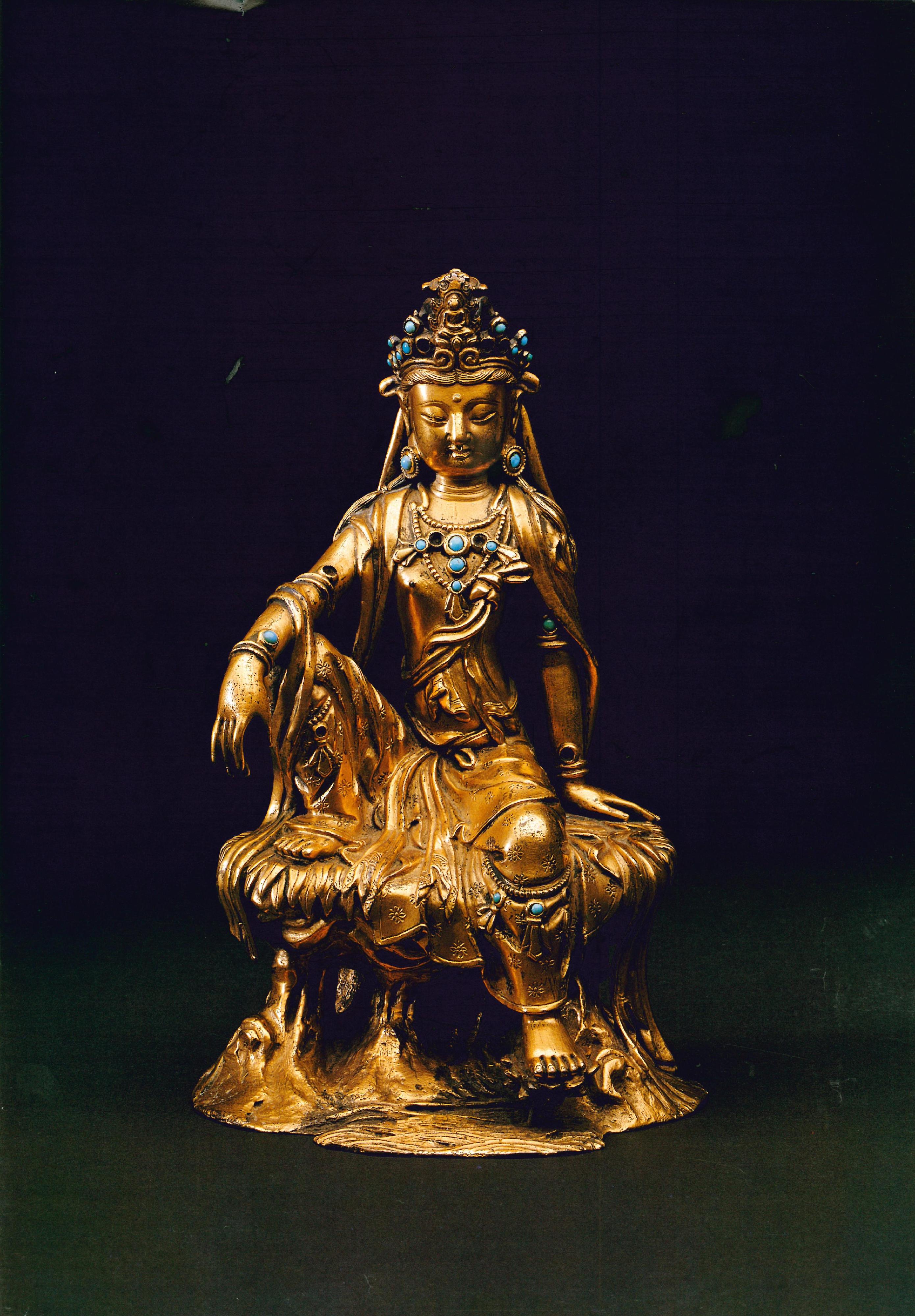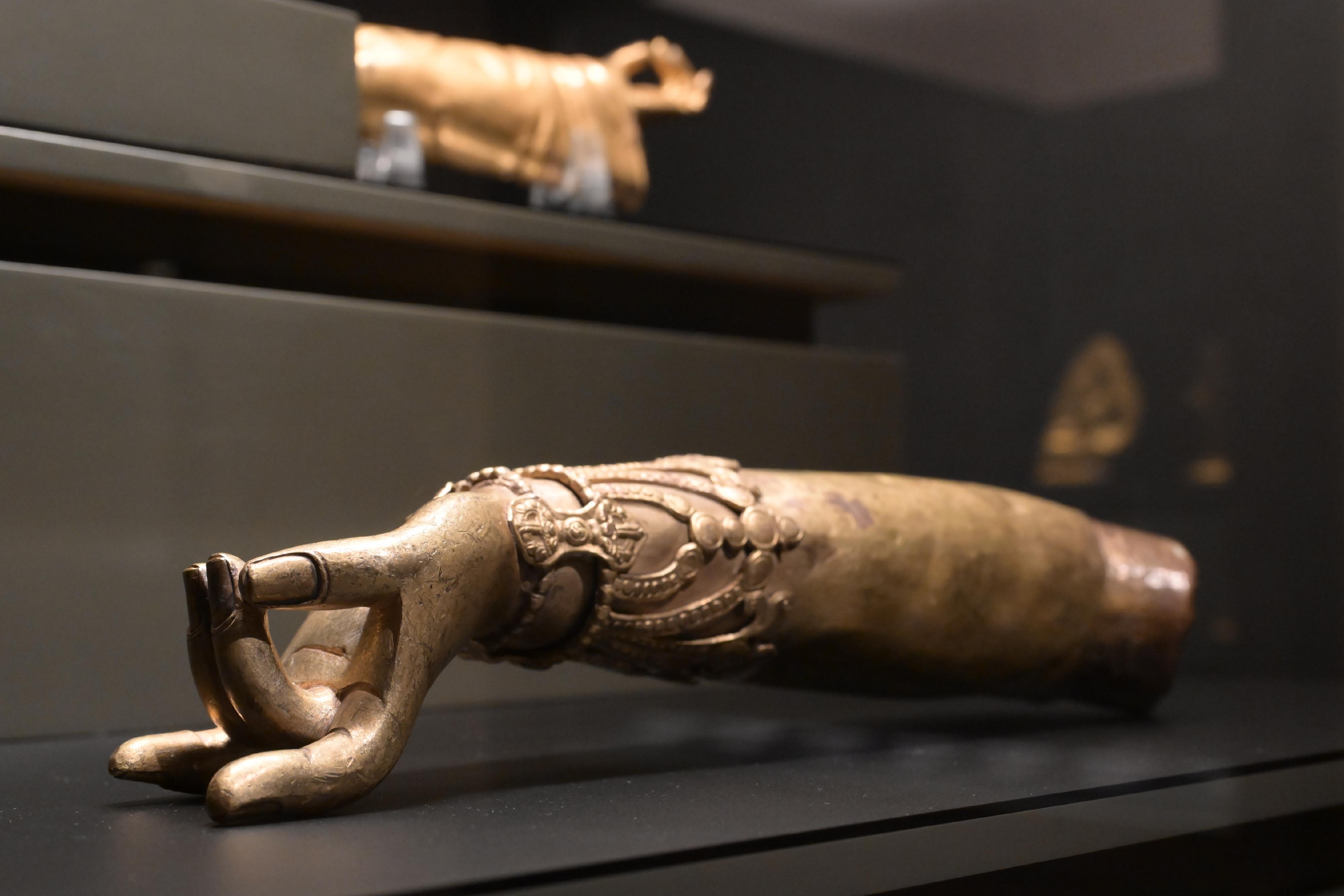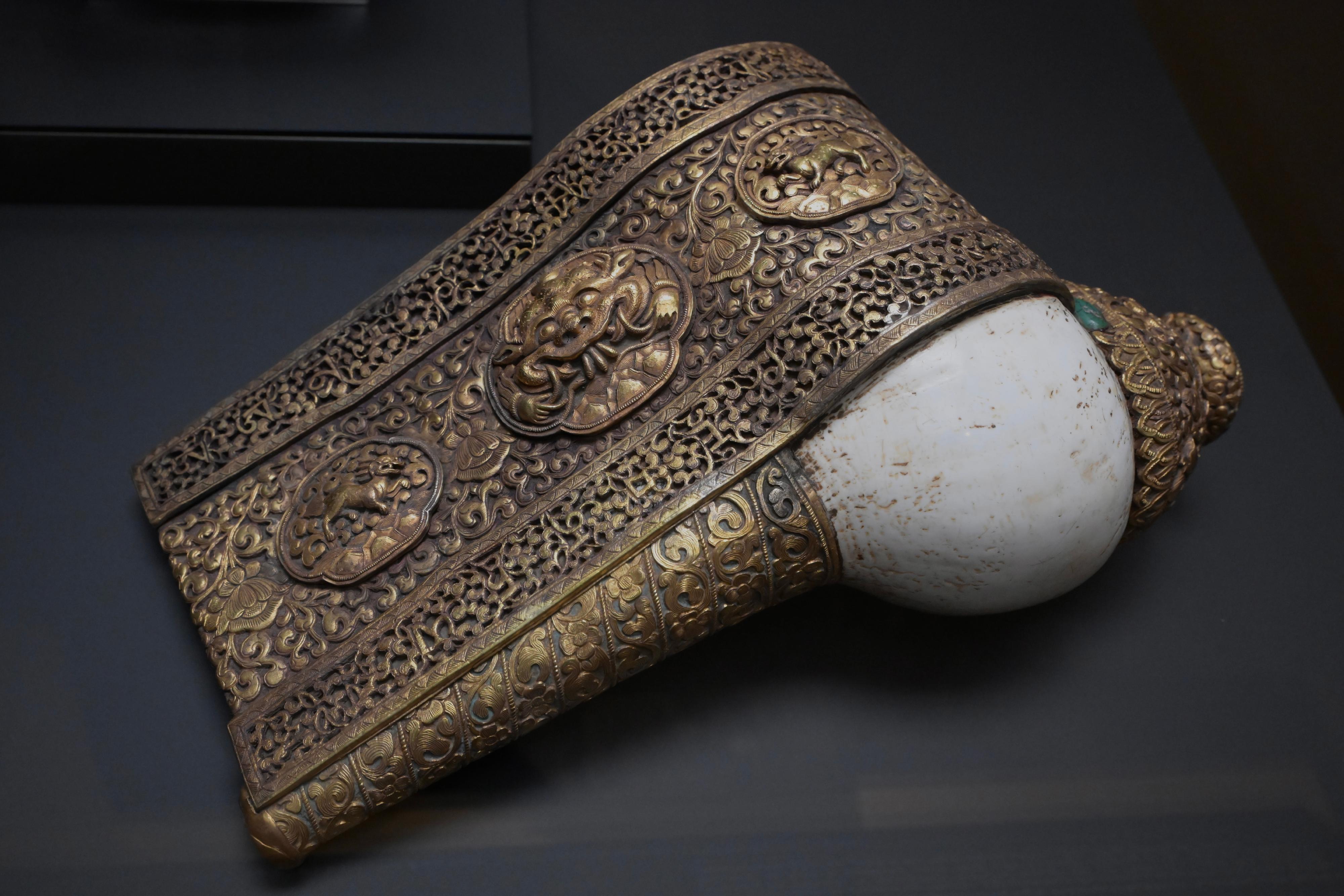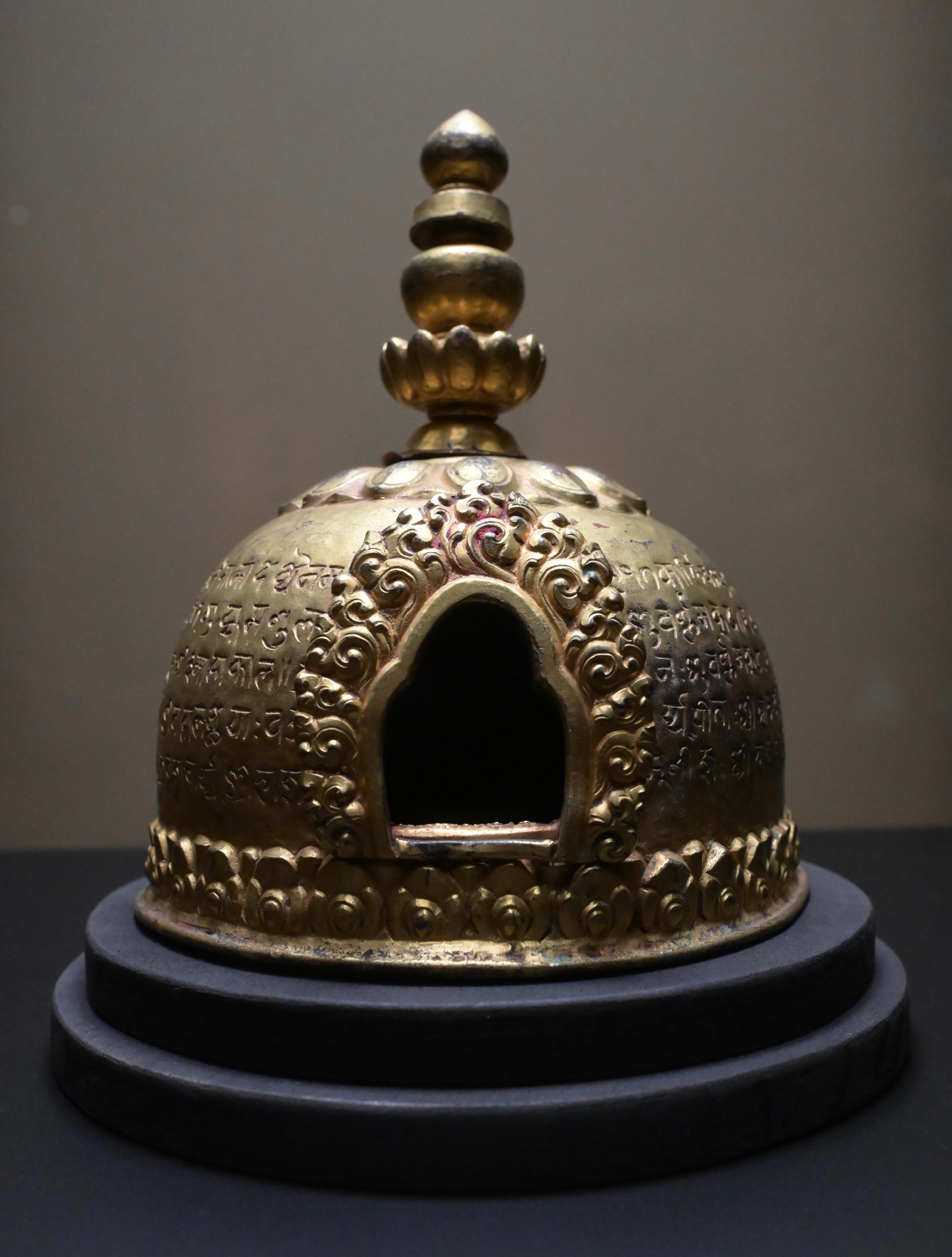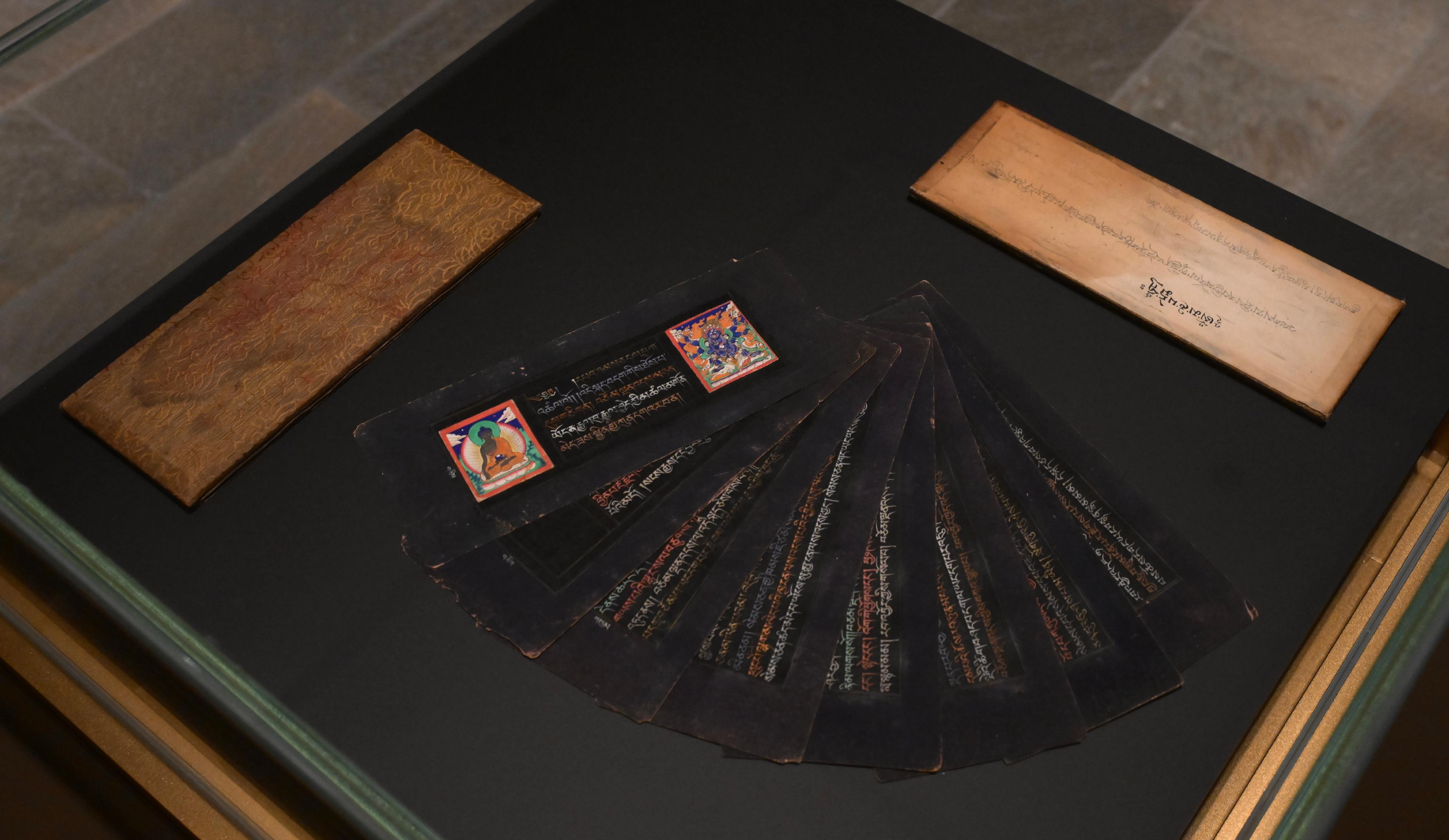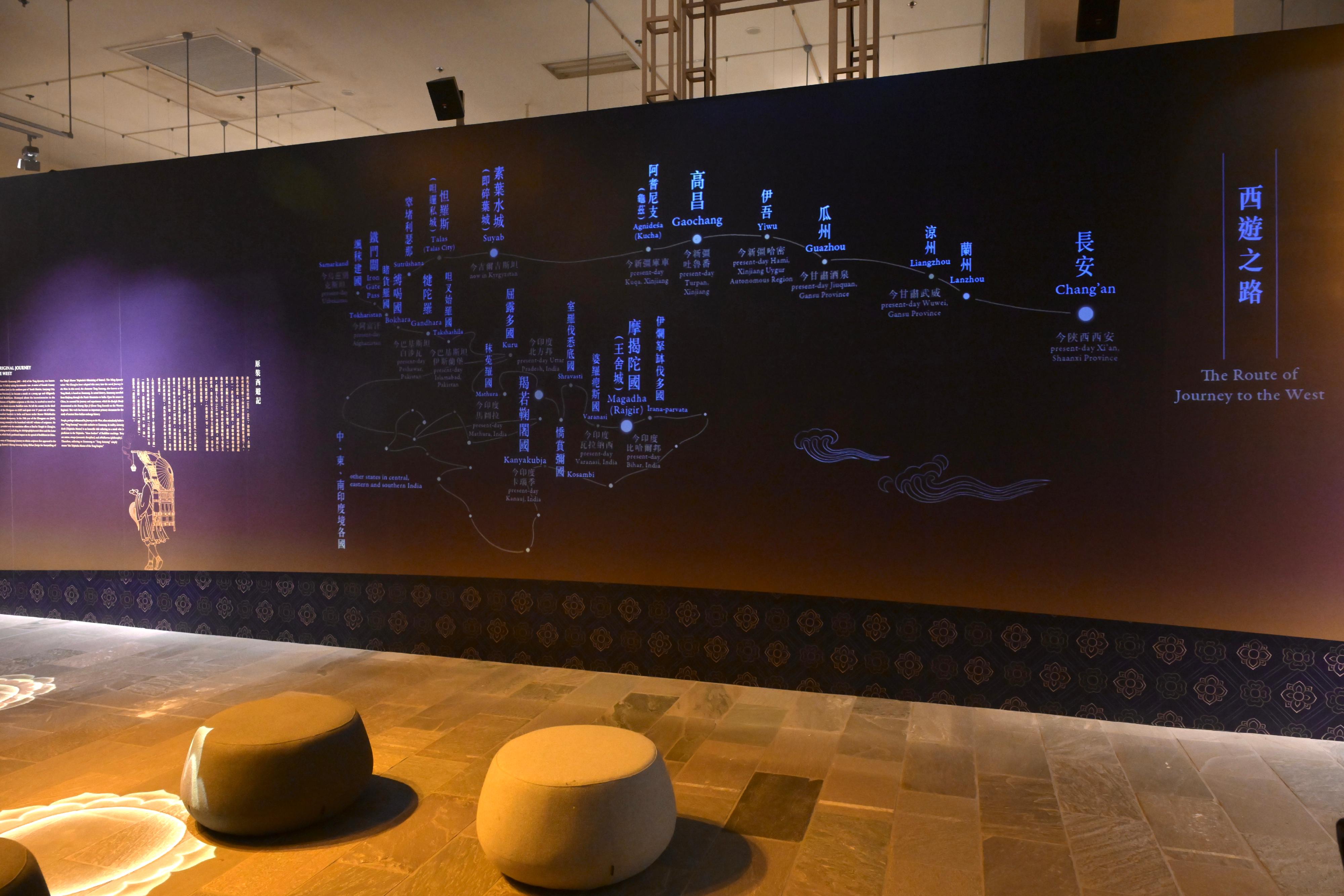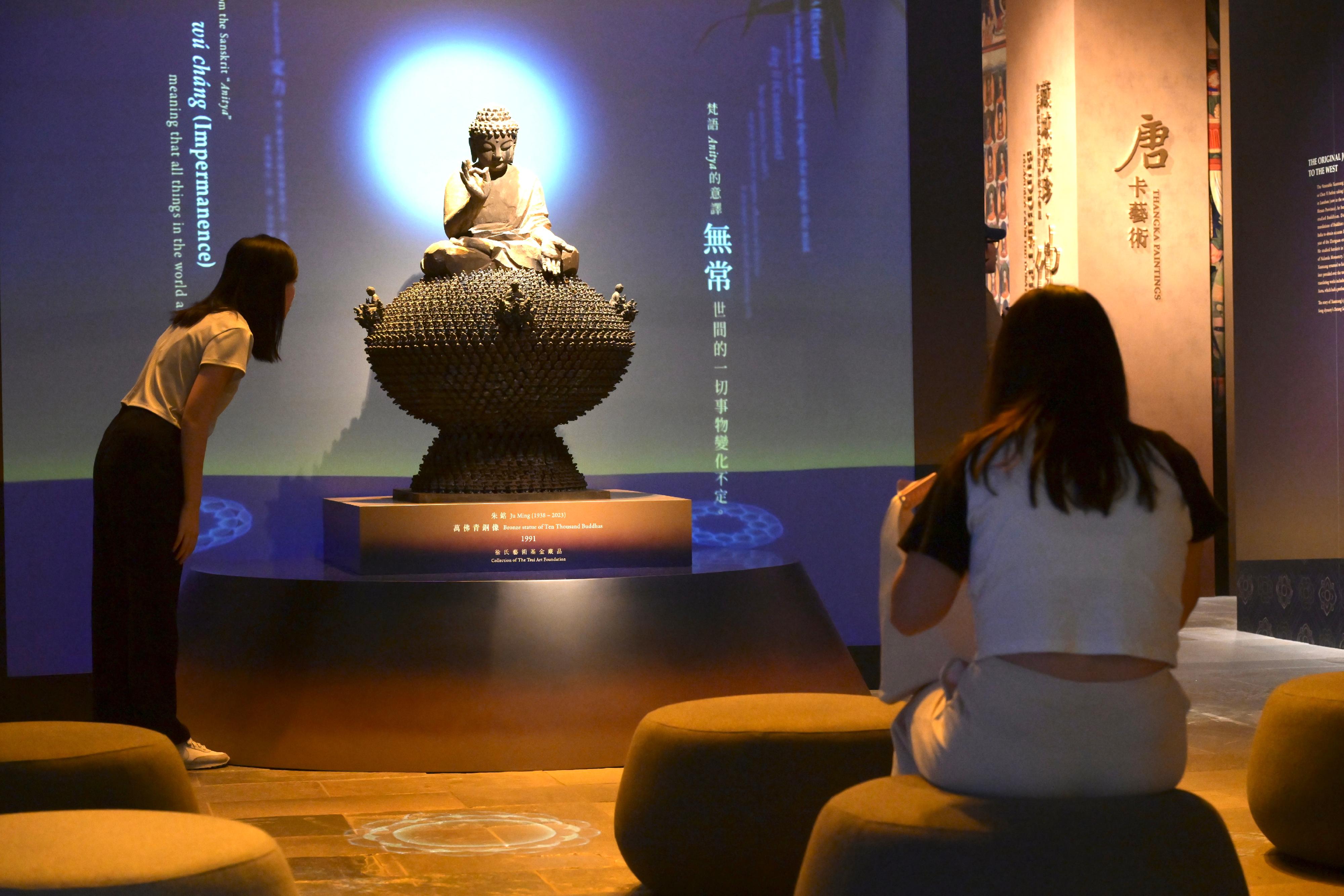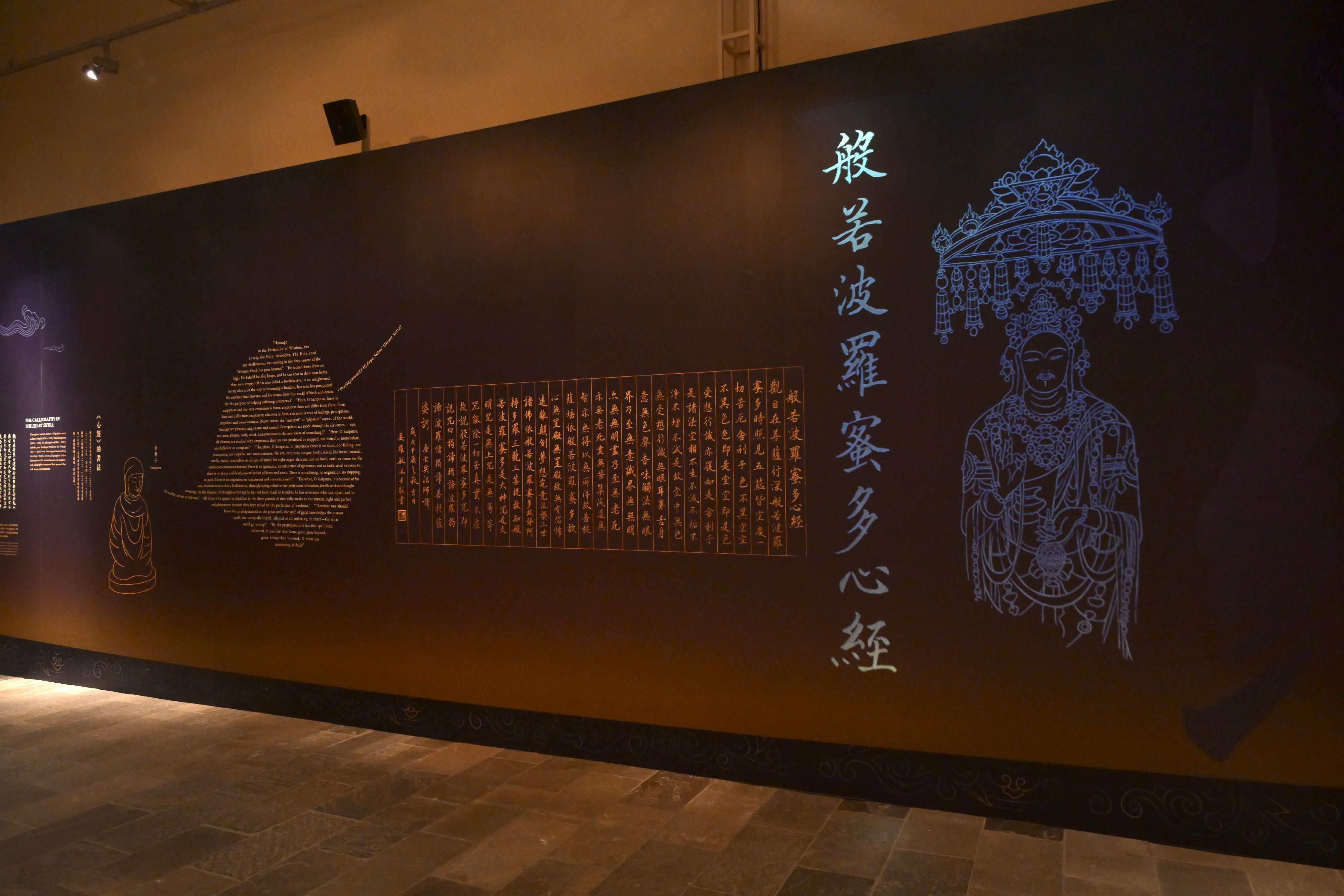The Hong Kong Heritage Museum (HKHM) will stage the exhibition "Buddhist Pilgrimage: Treasures from the Donation of The Tsui Art Foundation" starting tomorrow (October 30) by selecting 70 Buddhist treasures from the ancient Chinese artefacts collection donated by the late Dr Tsui Tsin-tong for display. Precious exhibits include thangka paintings, gilt-bronze Buddhist statues and rare artefacts such as ritual objects and scriptures. With a multimedia educational display zone, the exhibition, with free admission, aims to present the introduction of Buddhism to China, its influence from the historical, artistic and cultural perspectives, as well as its impact on cultural exchanges between China and other countries.
The opening ceremony of the exhibition was held today (October 29). Addressing the ceremony, the Acting Director of Leisure and Cultural Services, Miss Eve Tam, said that during the early stage of the development of the HKHM, Dr Tsui provided full support in establishing the T. T. Tsui Gallery of Chinese Art, where the precious artefacts he donated to the HKHM were on display. Having witnessed the dispersal of Chinese artefacts abroad, Dr Tsui determined to protect the treasures. Through years of dedicated study and acquisition, he gradually built an extensive thangka art collection. Dr Tsui's passion for collecting Chinese artefacts transcends mere personal interest, embodying his significant contribution to the cause of Chinese national rejuvenation.
Other officiating guests included representatives of the Tsui Art Foundation Mr Tsui Ho-chuen and Ms Tsui Ching-ming; the Chairman of the History Sub-committee of the Museum Advisory Committee, Professor Joshua Mok; and the Museum Director of the HKHM, Mr Brian Lam.
The Tibetan Buddhist artefacts showcased in this exhibition are all acquired by Dr Tsui through his extensive travels and purchases since the 1970s, including 29 exquisite thangka paintings from the 17th to the 20th century, 18 gilt-bronze Buddhist statues and 23 rare ritual objects, scriptures and other items. Being an artistic form unique to Tibetan Buddhism, thangkas typically portray major Buddhist deities or respected religious patriarchs surrounded by a divine entourage on cotton or silk, to illustrate the stories of their lives or the realms over which they preside. The gilt-bronze Buddhist statues demonstrate the artisanship and the ingenuity of the metalworking craft, reflecting the mutual influence exerted by the cultures of the region throughout various periods.
Highlight exhibits include "Votive thangka of Padmasaṃbhava", which is the largest thangka on display at this exhibition, measuring 254.5 centimetres high and 202cm wide. The content of this thangka is based on the "Pad-ma thang-yig" (Life of the Master Padmasaṃbhava), and describes the charitable and pious deeds performed during the life of a great religious master. Another thangka, "Amit�bha", portrays the main deity Amit�bha in the centre and being surrounded by the Eight Great Bodhisattvas. The layout of the work is extremely detailed and powerful. The delicately painted "Eleven-faced Avalokiteśvara", with vivid colours, depicts an Avalokiteśvara with eight hands. The first pair of hands is held together in front of the chest, holding a precious jewel. The three hands on the right hold crystal beads, the Wheel of the Law, and the lower hand is in the "abhaya mudr�". On the left, the hands hold a lotus, a bow and arrows, as well as a kuṇ�ik�. "Gilt-bronze figure of Bodhisattva Avalokiteśvara" wears a pair of big earrings, and his exposed chest is adorned with strings of jewellery inlaid with turquoise. In addition, an exquisitely decorated "Conch shell" and a hand written "Buddhist sutra" with illustrations are also on display.
The curatorial team of the HKHM specially designated a multimedia educational display zone, utilising presentation techniques and multimedia installations alongside the artefacts on display, with a view to deepening visitors' understanding of the inclusiveness of Chinese culture and enhancing their interest in Chinese history and culture. The HKHM also commissioned designer Chiu Kwong-chiu and his team to produce an animation to interpret the pilgrimage to India of the great Buddhist master of the Tang dynasty, Xuanzang, and the contribution he made to cultural exchanges between China and the world. The multimedia installations manifest the influence of Buddhist culture in daily life in a lively way, such as pointing out the Buddhist origins behind everyday expressions, and briefly describing the content of the Heart Sutra and displaying the beauty of calligraphy.
For details of the exhibition, please visit hk.heritage.museum/en/web/hm/exhibitions/data/buddhist2024.html, or call 2180 8188 for enquiries.
The exhibition is one of the activities of the Chinese Culture Promotion Series. The Leisure and Cultural Services Department has long been promoting Chinese history and culture through organising an array of programmes and activities to enable the public to learn more about the broad and profound Chinese culture. For more information, please visit www.lcsd.gov.hk/en/ccpo/index.html.
Follow this news feed: East Asia






